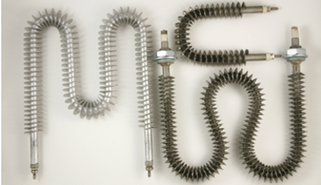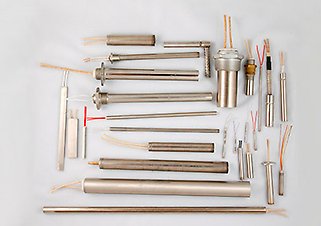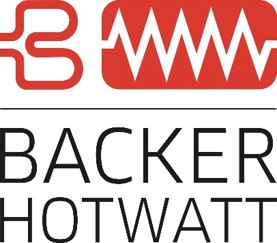What You Need to Know When Choosing a Heater for Your Application
When it comes to controlling the environment of your application, heat and temperature are crucial aspects to consider. Selecting the right heating element allows you to ensure the level of safety, allows you to attain optimal performance, and improves the overall efficiency of the heater's end use.
When the right heater is selected, you also save money on operational costs by buying the right product up front, thus reducing the time in the development cycle and improving your time to market. Heater requirements vary significantly depending on the market and application. Industries for medical devices, packaging equipment, laboratory and analytical equipment, semiconductor testing, food service, fuel cells, and opto-electronics all use heating elements as a core technology in many of their products.
The types of heaters used in these products are equally diverse. Tubular, cartridge, strip, band, foil, rope, ceramic, and silicone are all heating element technologies that can be used to heat air, gases, liquids, and solids. So, how do you pick the right heater? Even if you think you know what you want or need, there are several questions to consider. Answering them will ensure you choose the right heater and that it is applied correctly in the application.

Questions to Consider if You Don’t Know the Style of Heater You Require:
- Voltage: What is the available voltage for this application? Supply voltages often vary, but this information is so important when designing and building the best heater.
- Overall application: What is being heated? Knowing what you’re trying to heat is crucial to determining the best heater selection. Various applications, such as heating block dies, air, or liquid, all affect the details of the heater application as it’s being selected or customized
- Design envelope: What are the dimensions of the design envelope available? It’s important to know the size, length, diameter, and lead length of the heater required. These factors are important for designing heaters and addressing design limitations that may arise, such as maximum allowable watt density for the style or application of the heater.
- Wattage: The following are parameters to help determine the required wattage for your application. These help us calculate the specific requirements:
- Size and dimension of what is being heated
- The material being heated
- Temperature required for the application (starting temperature and operational temperature required)
- Time frame or how quickly you need the heater to heat up
Questions to Consider if You Do Know the Style of Heater You Require:
- Wattage: What is the amount of wattage needed for the application?
- Voltage: What is the available supply of voltage?
- Heater style: If you already know what heater you require, what is the style of heater you are interested in?
- Design envelope: What is the length, diameter, and lead length of the overall design envelope? Like the section above, it’s important to know this information so you can address any possible limitations.
- Overall application: What aspects of the application can you describe for our team? Answering this question thoroughly provides us with as much information as possible to best help you ensure the right heater is selected for the application. Through this discussion, we can make suggestions for better heating elements to fit the application needs and adjust for design limitations.
- Terminations: How will you connect the heater to the power source? How far is the heater from the power source? Are there any environmental conditions which require the connection to have special protection (abrasion/heat/chemical exposure)? Will a connector need to be added to the heater?
- Sheath material: Is a specific sheath material required? Certain applications require different corrosive resistance, and sometimes materials such as incoloy, brass, aluminum, or different or higher grades of stainless steel may be required.
- Special features: We offer several additional options in our catalog that can be added to the design, if needed. We have previously accommodated for custom flanges and mounting options, custom plugs or connectors for the heaters, as well as oddball sizes and shapes. If there is a feature not listed in the catalog, there is still a chance our team can customize the heater and the elements associated with it, so always include this information!
- Quantities: How many heating elements do you require? Knowing this information up front helps us offer the best possible price and helps with lead time when procuring any required materials
Backer Hotwatt Heater Examples
Our team encounters situations almost daily where the answer to the above questions have played a factor in the final heating equipment decision.

We had a customer call requesting a standard cartridge construction heating element with a high wattage, but through our conversations with them and discovering the size envelope and wattage required, we determined that it’s best to construct the specific heater, in this case as one of our Superwatt® units, that have higher allowable watt densities in the same envelope.
In a similar scenario, a customer wanted to heat air with one of our standard air process heaters. Through our discussions, we discovered the amount of airflow they’re looking to heat was a high amount of about 100 CFM. Due to this requirement, we were able to suggest and design a Maxi-Flow element, which is capable of heating in-line air up to 200 CFM.
One final example includes a customer looking to heat a giant platen or punching sheet. They were originally looking at our foil heaters, which cover large surfaces. However, they wanted to heat the platen up to 350 degrees Fahrenheit, which informed us that it would be best to redesign a system to bore holes inside the platen in order to fit some cartridge heaters, which have a higher temperature output and would, therefore, provide a more consistent heat.
Why Choose Backer Hotwatt
Backer Hotwatt Incorporated has been manufacturing custom and stock electric heating elements for over 65 years. Backer Hotwatt is a quality supplier to industrial users and original equipment manufacturers (OEMs) in the medical, commercial, packaging, instrumentation, aviation, transportation, refrigeration/air conditioning and military fields.
Our heaters include cartridge, air process, immersion, strip and finned strip, tubular and finned tubular, band, foil, flexible Glasrope®, crankcase, and ceramic heaters. We’re here to help you heat things up! Contact Backer Hotwatt today about your heating application needs and questions.

